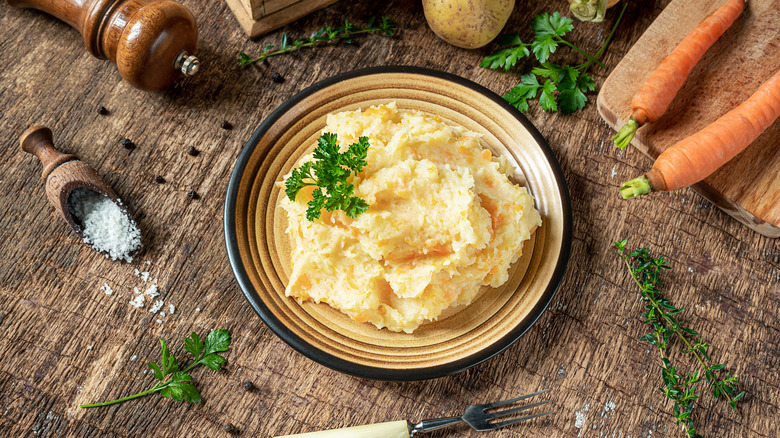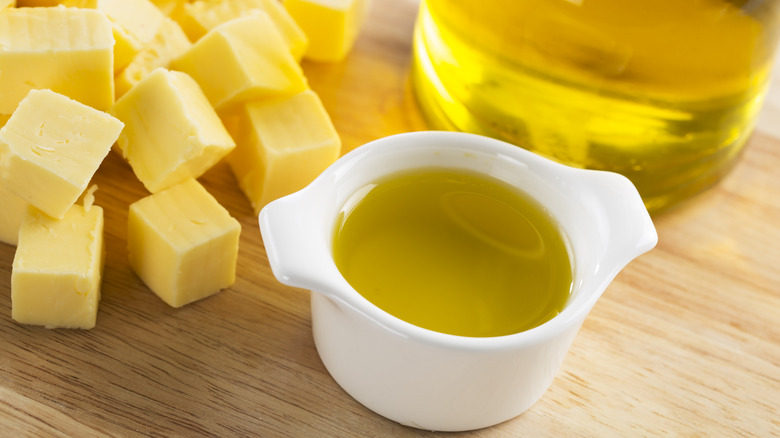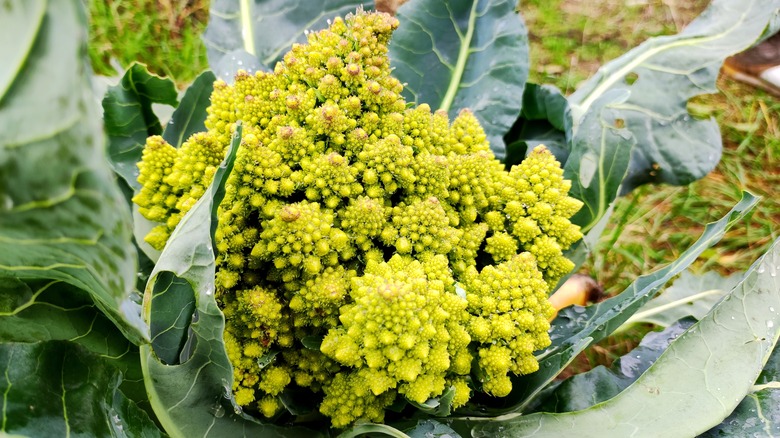The Ingredients To Think About For A Bolder Vegetable Purée
Vegetable purées have become all the rage lately. What was once considered baby food by the general public, or simply the first step in making a soup, is now wildly prevalent on shows like "MasterChef," and big-name chefs like Gordon Ramsay and Andrew Zimmern have shared their recipes. The typical usage, rather than a pile or bowl on the side, is to place them under the rest of the entrée, blending the flavors with the other components on the plate.
But how did purées suddenly become so popular? The answer is that people figured out ways to make them that didn't leave them tasting like something you'd feed a toddler. Purées, when prepared right, are spectacular — but that's the key. To truly produce a fantastic vegetable purée, you can't just cook a vegetable, then blend it and leave it at that; it's all about the extras you throw in as a finishing touch. There's not only one option here, either; you can get creative as long as you know which flavors work together.
Different add-ins will create different flavor profiles
It seems obvious to say, but using different ingredients at the end of the purée process can produce significantly different results. The most obvious here are butter and oil. Butter — as it does with so many foods — will give your purée a creamy richness, and is always one to consider. Oil, meanwhile, is mainly there for texture, softening the overall mix while providing a richness of its own. Heavy cream and vegetable stock can boost the flavor in their own ways, too.
But why not get even more inventive with it? Depending on your desired flavor profile and willingness to experiment, you can add tons of different liquids. If you want a sweeter purée, you could add something like fruit to the mix (although you may want to dilute it to control the sweetness level). If you want to thicken the purée while adding even more richness, you could use yogurt — though don't go overboard here, as if you use more than a bit, you're going to wind up with a smoothie. If you're not a vegetarian, and you have leftover drippings from cooked meat, you can even add some of that to give your purée a savory richness.
You can try a lot of different vegetables in a purée
It's also important to note that you can really get creative with which vegetables you use in a purée. Sure, you could do the now popular-among-the-fancy-crowd parsnip purée, or a classic like carrots, sweet potatoes, or spinach. But you've also got other options. The key, ultimately, is pretty simple: Just avoid veggies with a heavily fibrous quality like beets or broccoli, because parts of them aren't going to fully purée. You can mitigate this problem by removing more fibrous elements like the skin, but if you're dealing with something like peas, that can be a bit challenging.
If you want a purée that's similar in flavor profile to broccoli, a good option is romanesco, that wonderfully unusual-looking veggie that sits in the same family as broccoli, but has a thicker, more compact stem you could easily cut out to avoid fibrousness. Mixing an avocado with a heartier vegetable can make for a great purée with a ton of creaminess of its own. Or you could use a cactus fruit like nopales (prickly pears) if you want a flavor you might not have tried before.
Ultimately, you should feel free to experiment. Heck, maybe a fibrous vegetable like rutabaga will work great for you, especially when combined with different vegetable blends or add-ins. Don't be afraid to figure out what you like best.


